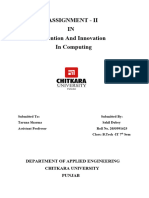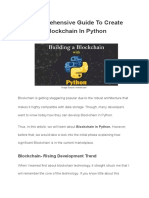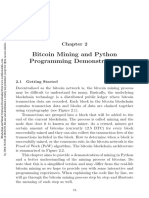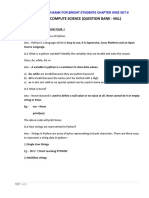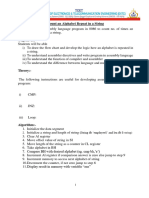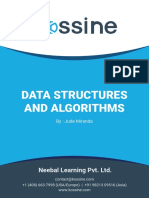0% found this document useful (0 votes)
43 views26 pagesBSC Blockchain Lab Manual
This document is a lab manual for the Blockchain Lab course at Savitribai Phule Pune University for the academic year 2024-2025. It outlines a series of experiments aimed at demonstrating various blockchain concepts and Python operations, including ledger creation, hashing, and block structure. Each experiment includes an aim, code, expected output, and a section for learning and explanations.
Uploaded by
Akshata LonariCopyright
© © All Rights Reserved
We take content rights seriously. If you suspect this is your content, claim it here.
Available Formats
Download as DOCX, PDF, TXT or read online on Scribd
0% found this document useful (0 votes)
43 views26 pagesBSC Blockchain Lab Manual
This document is a lab manual for the Blockchain Lab course at Savitribai Phule Pune University for the academic year 2024-2025. It outlines a series of experiments aimed at demonstrating various blockchain concepts and Python operations, including ledger creation, hashing, and block structure. Each experiment includes an aim, code, expected output, and a section for learning and explanations.
Uploaded by
Akshata LonariCopyright
© © All Rights Reserved
We take content rights seriously. If you suspect this is your content, claim it here.
Available Formats
Download as DOCX, PDF, TXT or read online on Scribd
/ 26








